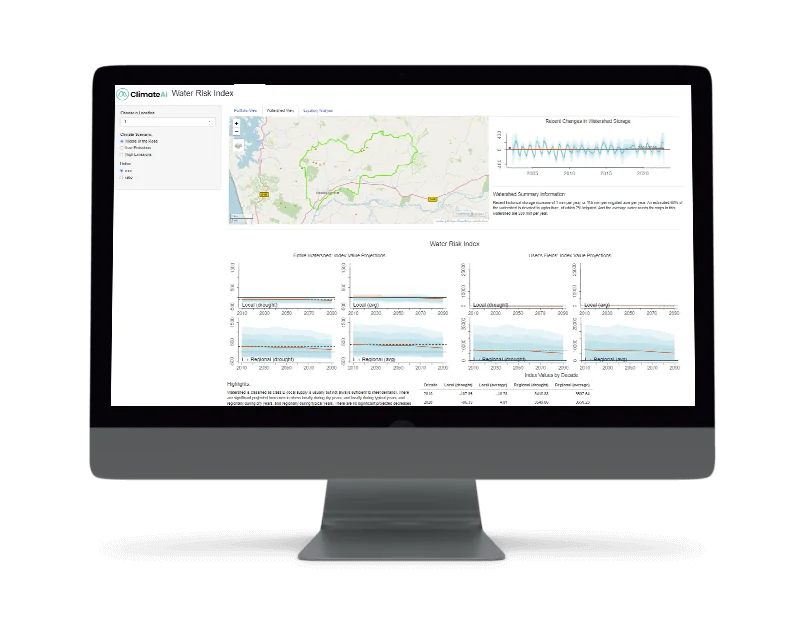New Product Launch: ClimateLens Monitor Yield Outlook - see regional and location-specific yields on key commodity crops, updated weekly.Learn More

From regulatory needs around TCFD/CSRD to critical decision support, get asset and portfolio- level risk analyses to set your business up for future success
Our AI and machine learning-powered climate analytics give you long-term visibility into climate risks and opportunities so you can start adapting your business to tomorrow’s challenges today.



Schedule a discovery call today to see how ClimateAi’s climate analytics tools can help your business adapt to extreme weather.
Identify risks and opportunities in your supply chain or portfolio
Understand how climate hazards impact your operations and assets
Build an action plan to address risks and protect your investments
Work to make your business TCFD/CSRD compliant
Case Study
Assessing Current and Future Climate Risks–at a Fraction of the Time and Cost
A large multinational corporation with 11 divisions, including agricultural solutions, was noticing an increase in climate volatility.
Downloadable Content
Webinar: The Wonderful Company
See how The Wonderful Company uses climate intelligence to derisk their supply chains
Climate resilience delivers a triple dividend for businesses: avoided losses, new market opportunities, and social and environmental benefits. Building a climate resilience strategy for your business can accelerate all three. In fact, climate resilience is one of the biggest market (and social) opportunities for companies today. ClimateAi has helped dozens of companies adapt to climate volatility, so we’ve got front-row seats to what works — and what doesn’t.
Check out our 2024 Climate Resilience Playbook for a detailed roadmap and case studies.

Weather-dependent businesses often require significant infrastructure investments, such as farmland, irrigation systems, transportation networks, and energy facilities. Demand for their products may also fluctuate with different climate scenarios. With actionable long-term forecasts, businesses can vet strategies and investments in current regions (and even new potential regions), conducting better due diligence and increasing confidence in actions. Building resilience is an opportunity to avoid losses improve margins, and uncover new opportunities.
Long-term climate data and analytics can help companies comply with TCFD recommendations and CSRD requirements by informing risk assessment and disclosure, providing scenario analysis, guiding adaptation planning, and facilitating stakeholder engagement on climate-related issues.
Our climate projections are based on climate models from the CMIP6 archive, which is also used as a basis for the IPCC reports. We use post-processing to reduce uncertainties from errors in the climate models by calibrating them against high-resolution observations and verify our forecasts by how well they represent past climate change. For this we use a cross-validation over the past four decades and assess how our post- processing changes the standard deviation of the projections as well as the Continuous Ranked Probability Score (CRPS), a measure of probabilistic forecast quality.